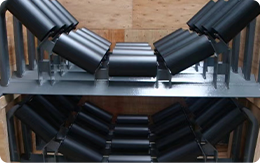 Afrikaans
Afrikaans  Albanian
Albanian  Amharic
Amharic  Arabic
Arabic  Armenian
Armenian  Azerbaijani
Azerbaijani  Basque
Basque  Belarusian
Belarusian  Bengali
Bengali  Bosnian
Bosnian  Bulgarian
Bulgarian  Catalan
Catalan  Cebuano
Cebuano  Corsican
Corsican  Croatian
Croatian  Czech
Czech  Danish
Danish  Dutch
Dutch  English
English  Esperanto
Esperanto  Estonian
Estonian  Finnish
Finnish  French
French  Frisian
Frisian  Galician
Galician  Georgian
Georgian  German
German  Greek
Greek  Gujarati
Gujarati  Haitian Creole
Haitian Creole  hausa
hausa  hawaiian
hawaiian  Hebrew
Hebrew  Hindi
Hindi  Miao
Miao  Hungarian
Hungarian  Icelandic
Icelandic  igbo
igbo  Indonesian
Indonesian  irish
irish  Italian
Italian  Japanese
Japanese  Javanese
Javanese  Kannada
Kannada  kazakh
kazakh  Khmer
Khmer  Rwandese
Rwandese  Korean
Korean  Kurdish
Kurdish  Kyrgyz
Kyrgyz  Lao
Lao  Latin
Latin  Latvian
Latvian  Lithuanian
Lithuanian  Luxembourgish
Luxembourgish  Macedonian
Macedonian  Malgashi
Malgashi  Malay
Malay  Malayalam
Malayalam  Maltese
Maltese  Maori
Maori  Marathi
Marathi  Mongolian
Mongolian  Myanmar
Myanmar  Nepali
Nepali  Norwegian
Norwegian  Norwegian
Norwegian  Occitan
Occitan  Pashto
Pashto  Persian
Persian  Polish
Polish  Portuguese
Portuguese  Punjabi
Punjabi  Romanian
Romanian  Russian
Russian  Samoan
Samoan  Scottish Gaelic
Scottish Gaelic  Serbian
Serbian  Sesotho
Sesotho  Shona
Shona  Sindhi
Sindhi  Sinhala
Sinhala  Slovak
Slovak  Slovenian
Slovenian  Somali
Somali  Spanish
Spanish  Sundanese
Sundanese  Swahili
Swahili  Swedish
Swedish  Tagalog
Tagalog  Tajik
Tajik  Tamil
Tamil  Tatar
Tatar  Telugu
Telugu  Thai
Thai  Turkish
Turkish  Turkmen
Turkmen  Ukrainian
Ukrainian  Urdu
Urdu  Uighur
Uighur  Uzbek
Uzbek  Vietnamese
Vietnamese  Welsh
Welsh  Bantu
Bantu  Yiddish
Yiddish  Yoruba
Yoruba  Zulu
Zulu conveyor return idlers
Understanding Conveyor Return Idlers Essential Components in Material Handling Systems
Conveyor return idlers play a crucial role in the efficient operation of conveyor systems, which are widely used in various industries for transporting bulk materials. These cylindrical supports are strategically positioned along the return path of a conveyor belt, ensuring that the belt remains properly aligned and maintains optimal tension. Their design and functionality are critical for minimizing wear, maximizing efficiency, and prolonging the lifespan of the conveyor system.
At first glance, return idlers might seem like simple components, but they are essential for maintaining the overall integrity of the conveyor system. When materials are loaded onto the conveyor, the belt experiences significant tension and friction. As the belt moves, it travels over the idlers, which support its weight and allow it to return smoothly to the loading area. Without adequate support from return idlers, the belt could sag or become misaligned, leading to uneven wear and potential failure.
There are several types of return idlers designed for different applications. The most common types include flat return idlers, which are designed for standard applications, and variable designs, such as crowned or roller return idlers, which help guide the belt and prevent it from drifting. Each type serves a specific purpose, addressing factors like the type of material being transported, the speed of the conveyor system, and the environment in which they operate.
conveyor return idlers

One of the key benefits of using conveyor return idlers is their ability to reduce friction between the conveyor belt and the supporting structure
. By minimizing this friction, return idlers help to decrease energy consumption and improve the overall efficiency of the material handling process. This reduction in friction also leads to less wear on the belt itself, which can significantly lower maintenance costs and increase the life span of the conveyor system.Proper maintenance of conveyor return idlers is vital to ensure long-term performance. Regular inspections are necessary to check for signs of wear or damage, and any areas of concern should be addressed promptly. Lubrication of moving parts, cleaning debris, and ensuring proper alignment are essential maintenance tasks that can prevent costly breakdowns. Additionally, the materials used in the construction of return idlers can significantly impact their durability, with options ranging from steel for high-capacity applications to plastic for lighter uses.
In summary, conveyor return idlers may seem like minor components, but they are instrumental in ensuring the smooth operation of conveyor systems. Their ability to support the conveyor belt, reduce friction, and minimize wear makes them indispensable in material handling applications across various industries. By investing in high-quality return idlers and performing regular maintenance, companies can enhance their operational efficiency, reduce costs, and ensure the reliability of their material transport systems. Understanding the importance of return idlers is key to optimizing performance and achieving success in any operation that relies on conveyor technology.
-
Revolutionizing Conveyor Reliability with Advanced Rubber Lagging PulleysNewsJul.22,2025
-
Powering Precision and Durability with Expert Manufacturers of Conveyor ComponentsNewsJul.22,2025
-
Optimizing Conveyor Systems with Advanced Conveyor AccessoriesNewsJul.22,2025
-
Maximize Conveyor Efficiency with Quality Conveyor Idler PulleysNewsJul.22,2025
-
Future-Proof Your Conveyor System with High-Performance Polyurethane RollerNewsJul.22,2025
-
Driving Efficiency Forward with Quality Idlers and RollersNewsJul.22,2025





























